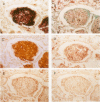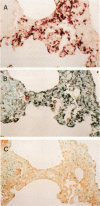Abstract
AIMS: To investigate the effectiveness of digoxigenin incorporated double stranded DNA probes produced by the polymerase chain reaction (PCR), for the detection of Pneumocystis carinii, using in situ hybridisation (ISH). METHODS: Formalin fixed, paraffin wax embedded sections of 26 human lung samples from 11 patients with P carinii pneumonia (PCP), and 15 with various types of fungal and viral pneumonia, were obtained during necropsy or transbronchial lung biopsy. Three additional PCP induced rat lung samples were also tested. PCR probes were prepared using the digoxigenin labelling mixture, and they were amplified from the DNA of a PCP induced rat lung after administration of dexamethasone, on the basis that 5S ribosomal RNA sequences are identical in human and rat P carinii. ISH was performed using this probe, and visualised using the digoxigenin nucleic acid detection kit. An immunohistochemical study using anti-human Pneumocystis monoclonal antibody was also carried out in parallel. RESULTS: ISH positively stained eight (of eight) lung necropsy specimens from patients with PCP, three (of three) transbronchial lung biopsy specimens from patients with PCP, and none of the three PCP induced rat lung specimens. In contrast, none of the specimens from patients with pneumonia caused by Aspergillus sp (n = 5), Candida sp (n = 4), Cryptococcus sp (n = 2), mucormycosis (n = 2), or cytomegalovirus (n = 2) were positive on ISH or immunohistochemistry. CONCLUSIONS: Using a digoxigenin labelled PCR probe for the entire 5S rRNA sequence in conjunction with conventional staining, ISH is highly reactive and specific for the diagnosis of PCP.
Full text
PDF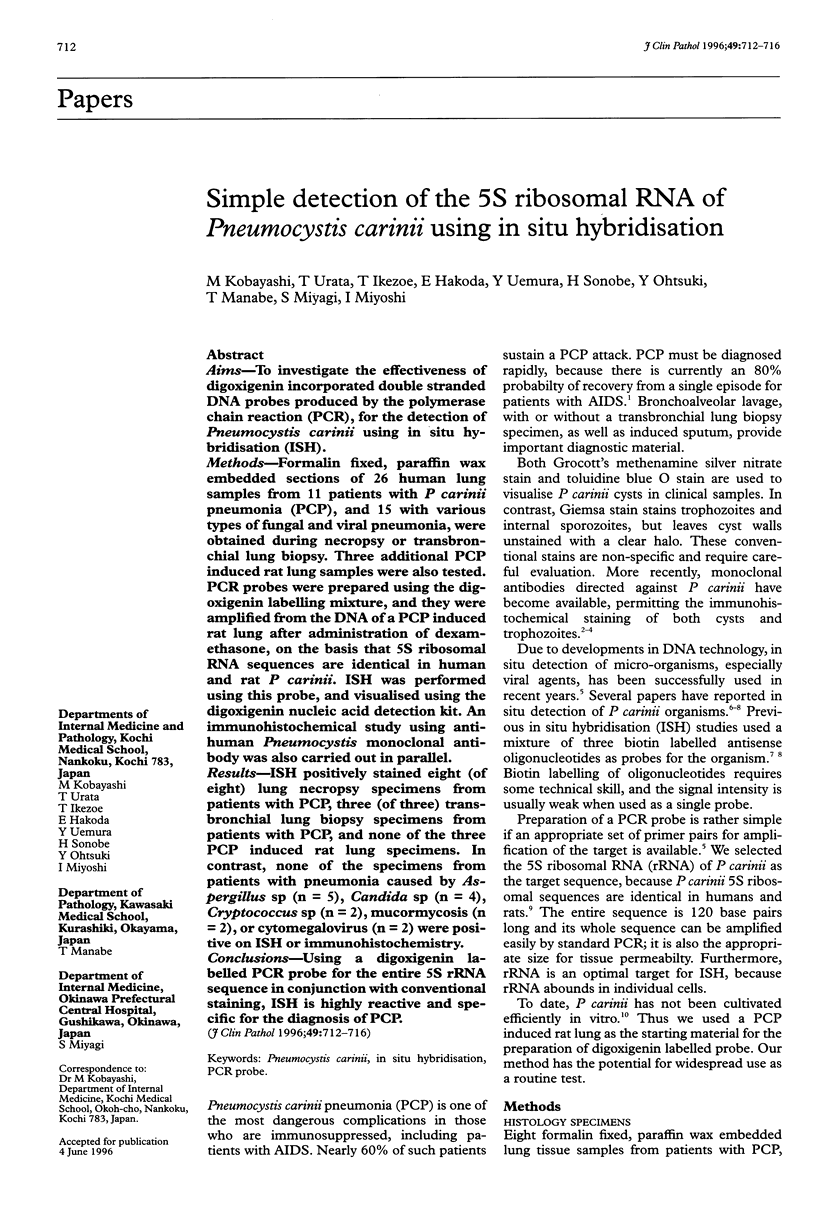
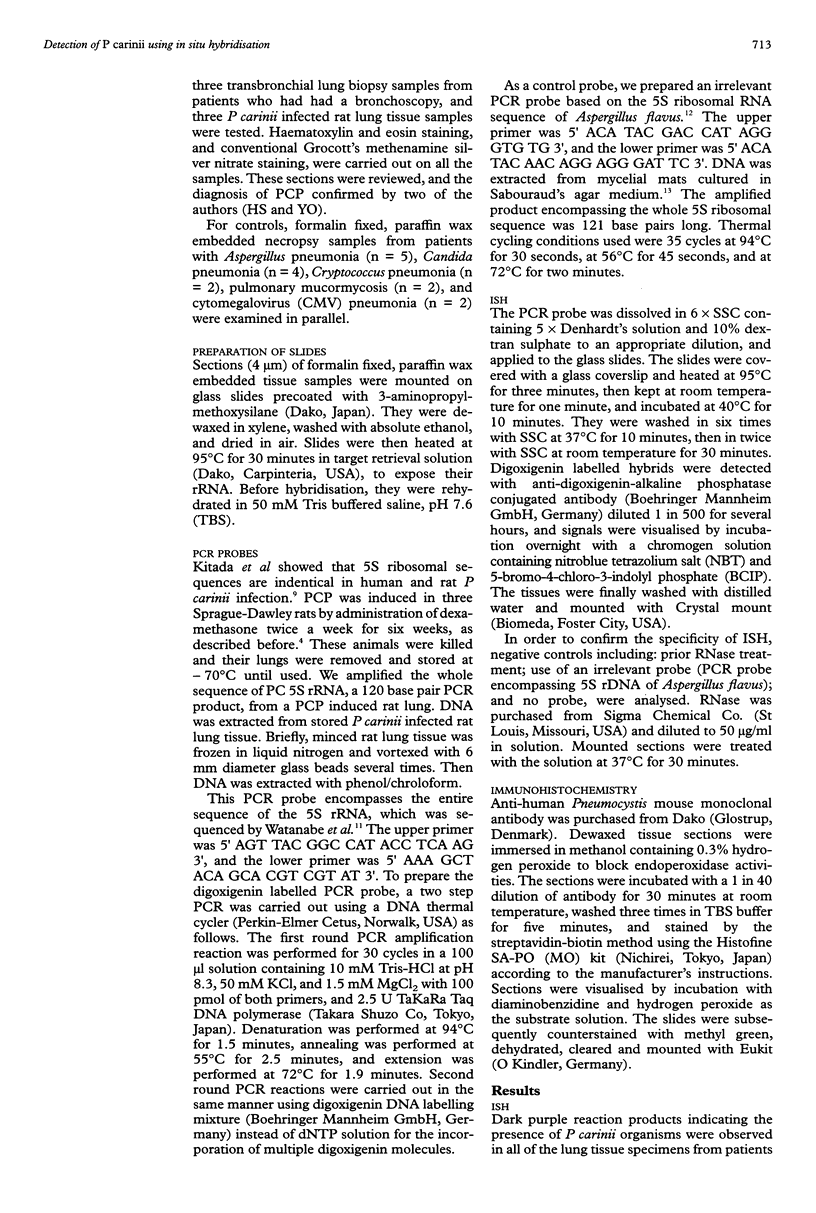

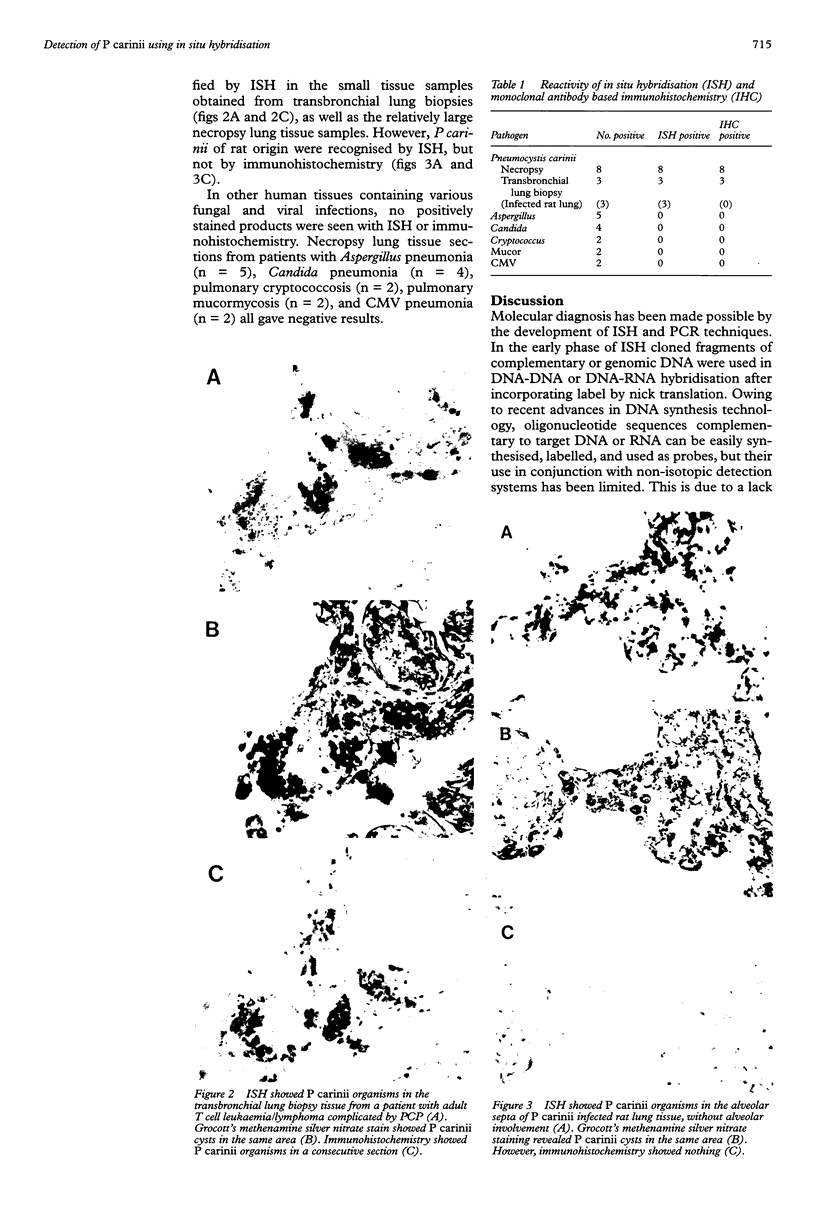
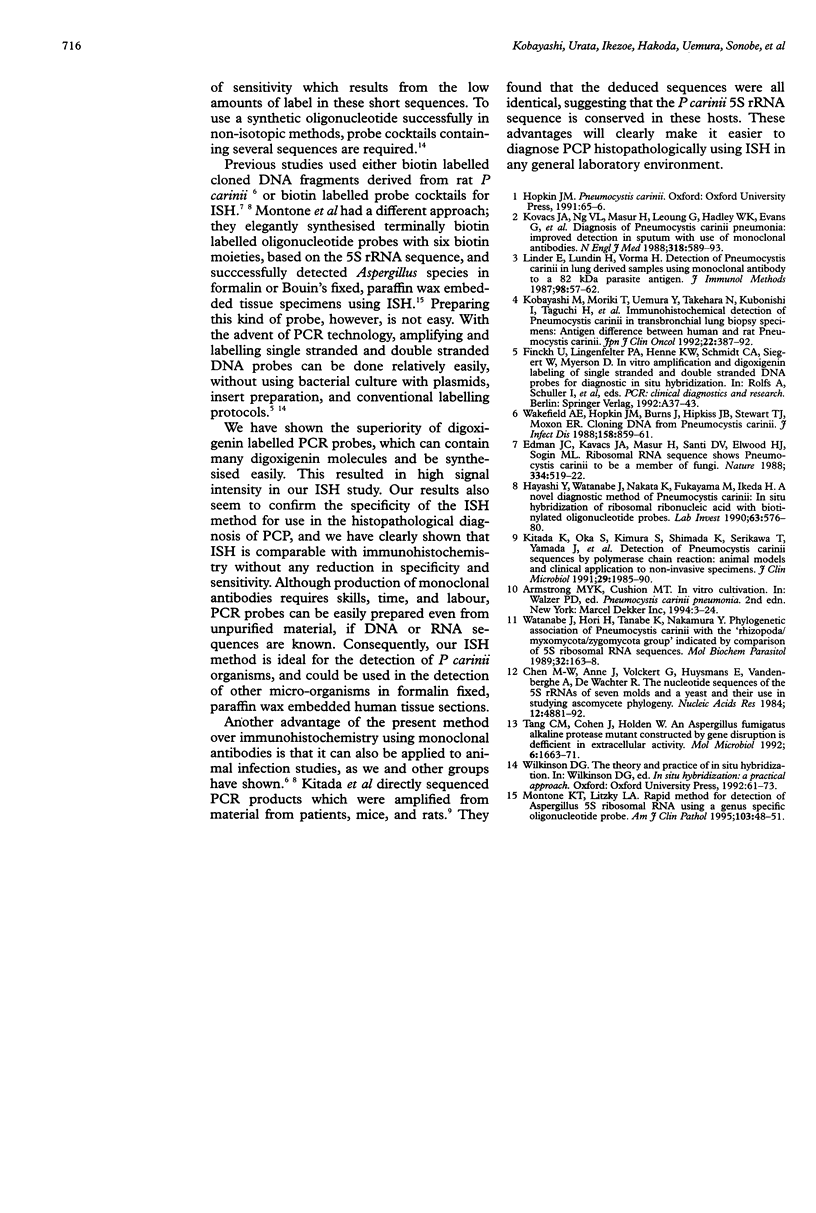
Images in this article
Selected References
These references are in PubMed. This may not be the complete list of references from this article.
- Chen M. W., Anné J., Volckaert G., Huysmans E., Vandenberghe A., De Wachter R. The nucleotide sequences of the 5 S rRNAs of seven molds and a yeast and their use in studying ascomycete phylogeny. Nucleic Acids Res. 1984 Jun 25;12(12):4881–4892. doi: 10.1093/nar/12.12.4881. [DOI] [PMC free article] [PubMed] [Google Scholar]
- Edman J. C., Kovacs J. A., Masur H., Santi D. V., Elwood H. J., Sogin M. L. Ribosomal RNA sequence shows Pneumocystis carinii to be a member of the fungi. Nature. 1988 Aug 11;334(6182):519–522. doi: 10.1038/334519a0. [DOI] [PubMed] [Google Scholar]
- Hayashi Y., Watanabe J., Nakata K., Fukayama M., Ikeda H. A novel diagnostic method of Pneumocystis carinii. In situ hybridization of ribosomal ribonucleic acid with biotinylated oligonucleotide probes. Lab Invest. 1990 Oct;63(4):576–580. [PubMed] [Google Scholar]
- Kitada K., Oka S., Kimura S., Shimada K., Serikawa T., Yamada J., Tsunoo H., Egawa K., Nakamura Y. Detection of Pneumocystis carinii sequences by polymerase chain reaction: animal models and clinical application to noninvasive specimens. J Clin Microbiol. 1991 Sep;29(9):1985–1990. doi: 10.1128/jcm.29.9.1985-1990.1991. [DOI] [PMC free article] [PubMed] [Google Scholar]
- Kobayashi M., Moriki T., Uemura Y., Takehara N., Kubonishi I., Taguchi H., Miyoshi I. Immunohistochemical detection of Pneumocystis carinii in transbronchial lung biopsy specimens: antigen difference between human and rat Pneumocystis carinii. Jpn J Clin Oncol. 1992 Dec;22(6):387–392. [PubMed] [Google Scholar]
- Kovacs J. A., Ng V. L., Masur H., Leoung G., Hadley W. K., Evans G., Lane H. C., Ognibene F. P., Shelhamer J., Parrillo J. E. Diagnosis of Pneumocystis carinii pneumonia: improved detection in sputum with use of monoclonal antibodies. N Engl J Med. 1988 Mar 10;318(10):589–593. doi: 10.1056/NEJM198803103181001. [DOI] [PubMed] [Google Scholar]
- Linder E., Lundin L., Vorma H. Detection of Pneumocystis carinii in lung-derived samples using monoclonal antibodies to an 82 kDa parasite component. J Immunol Methods. 1987 Apr 2;98(1):57–62. doi: 10.1016/0022-1759(87)90435-2. [DOI] [PubMed] [Google Scholar]
- Montone K. T., Litzky L. A. Rapid method for detection of Aspergillus 5S ribosomal RNA using a genus-specific oligonucleotide probe. Am J Clin Pathol. 1995 Jan;103(1):48–51. doi: 10.1093/ajcp/103.1.48. [DOI] [PubMed] [Google Scholar]
- Tang C. M., Cohen J., Holden D. W. An Aspergillus fumigatus alkaline protease mutant constructed by gene disruption is deficient in extracellular elastase activity. Mol Microbiol. 1992 Jun;6(12):1663–1671. doi: 10.1111/j.1365-2958.1992.tb00891.x. [DOI] [PubMed] [Google Scholar]
- Wakefield A. E., Hopkin J. M., Burns J., Hipkiss J. B., Stewart T. J., Moxon E. R. Cloning of DNA from Pneumocystis carinii. J Infect Dis. 1988 Oct;158(4):859–862. [PubMed] [Google Scholar]
- Watanabe J., Hori H., Tanabe K., Nakamura Y. Phylogenetic association of Pneumocystis carinii with the 'Rhizopoda/Myxomycota/Zygomycota group' indicated by comparison of 5S ribosomal RNA sequences. Mol Biochem Parasitol. 1989 Jan 15;32(2-3):163–167. doi: 10.1016/0166-6851(89)90067-4. [DOI] [PubMed] [Google Scholar]



